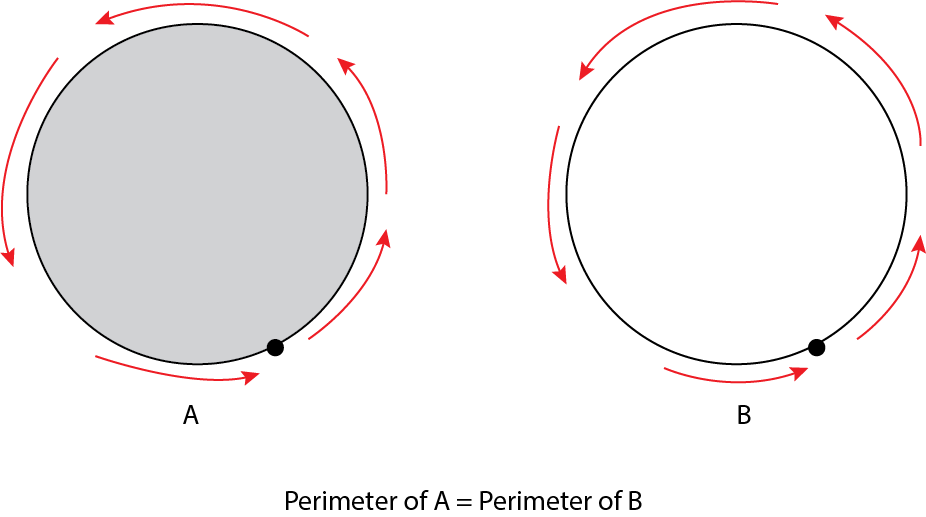Perimeter
Perimeter is the distance around a two-dimensional shape.
The word "perimeter" comes from the Greek word "perimetros." In this word, "peri-" means "around" or "about," and "-metros" relates to "measure." So, "perimetros" essentially means "measurement around," which accurately describes the concept of perimeter as the measurement of the distance around a shape. The prefix "peri-" appears in many English words borrowed from Greek, often indicating something "around" or "surrounding," such as "periscope" (looking around) or "periphery" (boundary or surrounding area).
Perimeter of a Shape:
Imagine that you could walk right along the edge of shape until you all the way back to the point that you started from, the total distance you traveled would be the perimeter of a shape.
Your starting point doesn't matter, whether you turn clockwise or counterclockwise; in the end, you come back to where you started.
Compare Perimeter
Let's take a starting point and walk around the shape until we return to where we started. Since we will be walking around the shape, whether its interior is filled or empty doesn't affect how much distance we will cover; after all, we will be walking around it.
Example
If I eat a piece of a whole pizza (as seen in the figure B), what can we say about its circumference? Does it increase, decrease, or remain the same?
If you think the circumference will decrease, you are mistaken.
He was already walking from point A to point B, there's no change there. He won't walk the section indicated by the dotted line anymore, but to get from point B to point A, he now needs to walk two new paths.Therefore, the circumference increases.
Example
If I eat half of the pizza, how does its circumference change? Does it increase? Decrease? Or remain the same?
The length of the part removed from the circumference is greater than the length of the part added, so the circumference has decreased.
Example :
If we cut a rectangular piece from the corner of a rectangular piece of paper, how does the shape's perimeter change? Does it increase? Decrease? Or remain the same?
Let's say he started his journey from point A. He was already walking the path from A to B, so there's no change in the distance between A and B. However, to get from B back to his starting point at A, he acquired new paths instead of walking the old one. The length of the removed long side is equal to the added long side, and the length of the removed short side is equal to the added short side. Therefore, since the total lengths of the added and removed paths are equal, the shape's perimeter remains unchanged.









Comments
Post a Comment